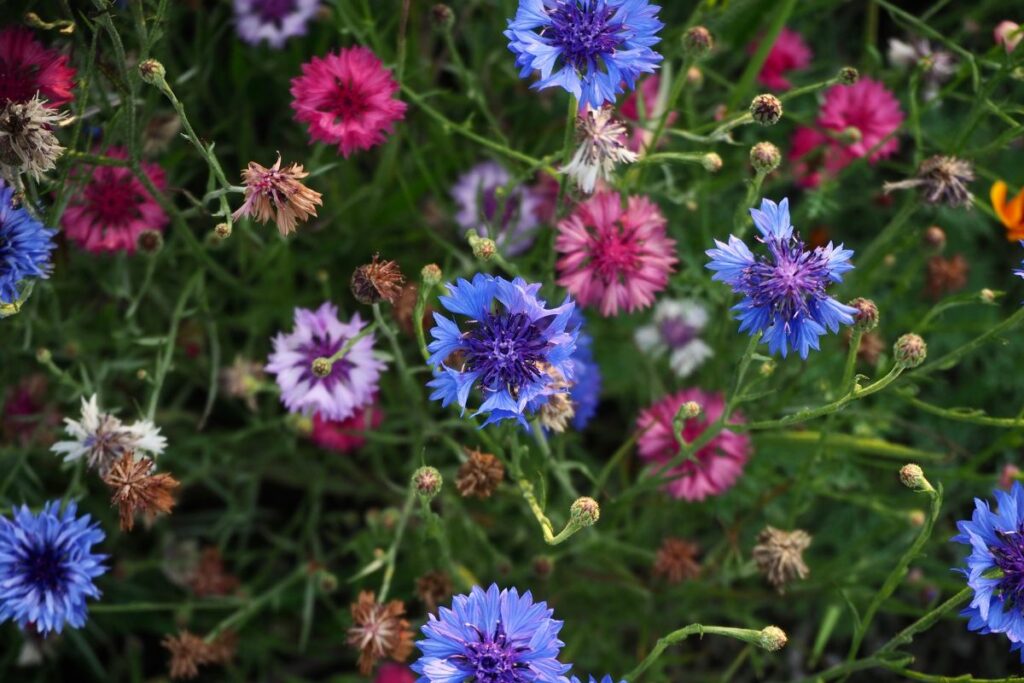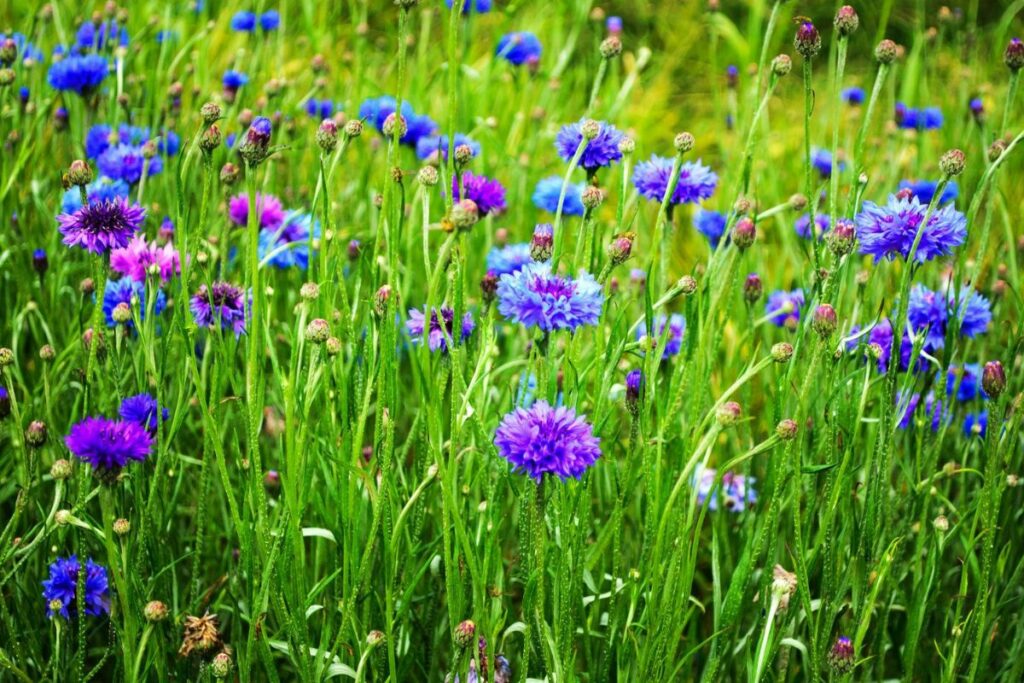Thinking about adding some new flowers to your garden?
Consider Bachelor Buttons! These charming blooms are not just beautiful—they’re easy to grow too.
Discover why they’re a great choice and get top growing tips.
Ready to brighten up your garden?
Let’s get started!
Varied Spectrum of Hues

Rich Array of Tints:
Your garden will benefit from the gamut of shades that cornflowers offer, ranging from their signature sky blue to pinks, whites, and violets, crafting a delightful visual scene.
Lure for Pollinators:
By incorporating cornflowers, you beckon a myriad of pollinators, such as buzzing bees and fluttering butterflies, which are integral to your garden’s vitality and the broader natural world.
Uncomplicated Cultivation:
These resilient annuals are a boon for green thumbs of all levels. They are not finicky about soil and demand very little upkeep.
Ideal for Floral Arrangements:
Cornflowers are excellent for snipping and bringing indoors. Their upright stems and vibrant flowers lend themselves to eye-catching bouquets that enliven any room.
Embodiment of Rustic Charm:
Cornflowers enhance the nostalgic allure of a country garden. They mingle splendidly with common rustic blooms like roses, daisies, and foxgloves.
Self-Propagation:
With a propensity to self-seed, cornflowers can become a perennial presence in your garden, sprouting anew with minimal intervention.
Beneficial Neighbors:
These blooms play a significant part in garden health, repelling pests and inviting insect allies that contribute to a harmonious garden ecosystem.
Emblems of Sentiment:
In your garden, cornflowers can embody feelings of anticipation, affection, and commemoration, engendering a deeper emotional connection.
Culinary Delights:
Safe for consumption when cultivated without pesticides, cornflower petals can embellish a variety of dishes, adding an elegant touch to your culinary presentation.
Effortless Upkeep:
After taking root, cornflowers ask for little—just the occasional removal of faded flowers to extend their blooming and some extra water in dry periods.
Cultivation Techniques for Cornflower

Light Requirements:
Make sure to position your cornflowers where they will be bathed in sunlight for 6 to 8 hours a day.
Soil Preferences:
Opt for soil that drains well and is not heavily loaded with nutrients—over-fertility can lead to more leaves than blooms.
Planting Guidelines:
Feel free to sow seeds directly outdoors once the threat of frost has passed, or start them inside a bit earlier and then move the young plants outside.
Appropriate Spacing:
Place seeds or young plants 6 to 12 inches apart to give them ample room to reach their full potential.
Watering Regimen:
Maintain a steady watering schedule, providing extra attention during long dry spells. However, avoid excessive watering to prevent root rot.
Flower Maintenance:
Snip off faded blooms to keep the flowering going and to control unwanted spreading if necessary.
Mulch Application:
A slender layer of mulch around the stalks can help preserve soil moisture and keep weeds at bay.
Structural Support:
Consider supporting taller strains of cornflowers to prevent the stems from bending or snapping, particularly in windy weather.
Pest Management:
Regularly inspect for aphids and other pests, employing organic techniques or insecticidal solutions to tackle any issues.
Cutting for Display:
For long-lasting cut flowers, choose cornflower stems with newly opened blooms to maximize the vibrancy and longevity in a vase.

